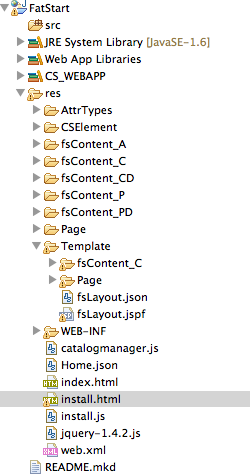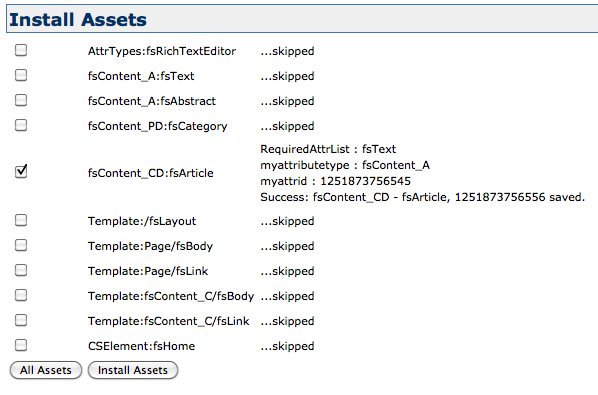Sometimes you are a victim of your own success. In the last few weeks I had so much to do that I had not the time to post anything. But since I started a couple of new FatWire projects, this gave me the opportunity to release another open project I was thinking of: FatStart.
Basically, FatStart is a template for FatWire Content Server site development that solves a few very well known problems in FatWire development:
The trick is that you store structural assets in json format, write your jsp in eclipse then publish them easily at any time using a javascript installer, both in your local development Jump Start or in the production server.
I know that there are already 2 Eclipse plugins for Fatwire development, but they are far from satisfactory. My solution tried to grab ideas from them but I am using an unmodified eclipse (no plugins) and just javascript to deploy the content in FatWire. The result works pretty well.
The project is basically the same distribution kit I developed for FatPhone but it is now standalone and I provided also the eclipse configuration files.
Just to give a taste of how the system works, please give a look to a few screenshots below.
Once you checked out FatStart from the GitHub repository and imported it in eclipse (also you have to do some tweaking explained in the README), this is what you will see:

Now you can edit your jsp directly in eclipse. You can also create your content model directly in Eclipse in Json format. For example this is the format of a content definition:
{
"AssetType": "fsContent_CD",
"internalname": "fsArticle",
"internaldescription": "FatStart Article",
"parentselectstyle": "selectboxes",
"RequiredSingleParentList": "fsCategory",
"RequiredAttrList": "fsText",
"OptionalAttrList": "fsAbstract"
}
The required fields are described in the developer manual, in the section related to XMLPost of FlexAssets.
The work done can be deployed at any time in FatWire for test calling the installer:
http://localhost:8080/res/install.html.
For example if you change the JSP of the fsLayout template, you can deploy this way:
 If you instead change a content definition, you can deploy it as well this way:
If you instead change a content definition, you can deploy it as well this way: That is all.
That is all. The installer is incremental and will replace existing assets and elements with the new version.
Basically, since all the site configuration is stored in source files, it can be stored in a version control system.
Each developer can have his own version of the site, and when something else change the code, he has only to update the source code of current version, using common merging techniques, and deploy it in his JumpStartKit.
Once the application is ready, the deployer have only to checkout the source code and install it in the production server.
There are a few limitations. So far the installer can only deploy assets and templates, but it does not create sites, flex families, treetabs or users and roles. Those configurations should be performed manually, although it not a big deal to do so.
So far the system is in use in a couple of sites I am developing and is robust enough to be used for day to day development. Anyway it is still an alpha release so I recommend precautions (although, once the assets are created in Fatwire, there is no so much differences from creating them manually).
Any comments is welcome and I recommend the group FatwireDev I manage to discuss it.